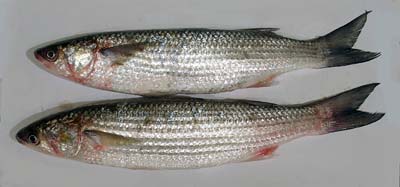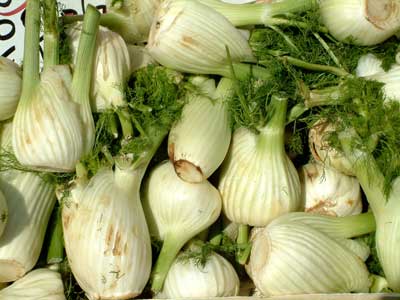
Grey mullet, the commonest and largest of the grey mullet (US: striped mullet) family. It is a silver, shoal-living fish pointed with dark grey which feeds on seaweed and plankton near the muddy bottom in estuaries and coastal waters. This can effect its flavour. However, a good grey mullet, caught in clean water, is round-bodied and has creamy white flesh and good flavour with good keeping capabilities. It must be thoroughly scaled before eating. Varieties are found all over the world. The roe is used for taramasalata, botargo, boutargue.
To make this yoghurt, take a gallon of milk, bring it to the boil and then cool it a little in large jars. It needs to be finger hot. Mix a pinch of Lactobacteria Bulgaricus with a little warm milk and add it to the jars and stir it well. Cover the jars with blankets. Allow them to breathe but keep them well tucked in overnight and then move them to the fridge ready for use.

Fennel. A relation of celery which flowers in summer. When young it has an appearance rather similar to dill, but when crushed, the leaves give off the familiar anise scent of fennel. The flowers are yellow, umbelliferous and produce elongated aromatic seeds. Fennel should not be grown close to dill as they will hybridise and produce useless seedlings. Baby leaves can be used whole in salads or laid on fish for cooking. Also known as Florence Fennel, the swollen stem is cooked as a vegetable. The aniseed flavour of stems, leaves and seeds makes it a perfect partner for pork, chicken or fish. Italians favour the male, flatter fennel bulb, which they call "maschi". May also be dill.